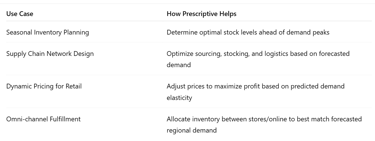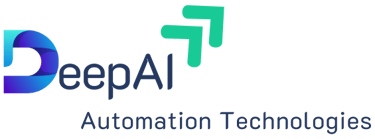Prescriptive Analytics in Demand Forecasting
7/23/20252 min read


Prescriptive analytics enhances demand forecasting by:
Translating forecast insights into optimal actions (e.g., ordering, allocation, pricing).
Accounting for constraints, costs, risks, and service level targets.
Generating "what-if" scenarios to support decisions under uncertainty.
Key Techniques in Prescriptive Analytics for Forecasting
A. Optimization Models
Used to determine optimal inventory levels, pricing, production plans, etc., based on forecasted demand.
Linear Programming (LP) & Mixed-Integer Programming (MIP)
E.g., minimize cost of stockouts + holding + procurement given forecasted demand.
Stochastic Optimization
Considers demand uncertainty: optimizes actions under probabilistic scenarios.
Use case: choose safety stock levels for variable demand forecasts.
Robust Optimization
Deals with worst-case scenarios instead of average-case (when data is noisy or unreliable).
B. Simulation-Based Optimization
Simulates different demand scenarios to test policies (e.g., replenishment or production).
Monte Carlo simulation + optimization to find best strategies under uncertainty.
C. Inventory Optimization (Based on Forecasts)
Determine:
Economic Order Quantity (EOQ)
Reorder Point (ROP)
Safety Stock
Inputs come from forecasts + service level targets.
D. Multi-Echelon Inventory Optimization (MEIO)
Prescribes inventory policies across entire supply chain network.
Inputs: demand forecast, lead times, variability, cost parameters.
Outputs: optimal stock levels per node.
E. Dynamic Pricing Optimization
Adjust prices dynamically based on forecasted demand curves to:
Maximize revenue or profit
Balance demand and inventory
F. Assortment and Allocation Optimization
Decide which SKUs to stock where based on forecasted local demand.
Optimize product mix to maximize revenue given space/capacity.
G. Reinforcement Learning (RL) & GenAI Approaches
RL: Learns inventory/promotion decisions over time via trial & error, using forecasts as part of state space.
GenAI:
Generate demand scenarios from unstructured data (e.g., social media, news).
Summarize forecasts or recommend actions in natural language to planners.
How It All Fits Together – A Typical Workflow
Forecasting Layer (Predictive)
Generate probabilistic or point forecasts for demand (time series, ML, etc.)
Prescriptive Layer (Optimization & Decision)
Input: Forecasts, constraints, business rules, objectives
Output: Actions like optimal ordering, allocation, pricing, capacity plans
Feedback Loop
Evaluate outcomes → feed back into models to refine forecasts & decisions
Use Cases


Tools and Technologies
Solvers: CPLEX, Gurobi, Google OR-Tools
Forecasting + Optimization Frameworks: Python (SciPy, Pyomo), R, Azure ML, SAP IBP, Kinaxis, o9
GenAI Integration: Use LLMs for narrative explanations, unstructured signal ingestion, or scenario generation.
Let's Get in Touch
marketing@deepaiautomation.com
+91 6309397994
© 2025. All rights reserved.
Industries
Manufacturing
Financial Services
Retail
Solutions
DocuMind AI - Intelligent Document Migration
InsightEdge AI - Intelligent Power BI Reporting & Analytics
DCT AI - Digital Control Tower for Intelligent Enterprise Visibility
Inventra AI - Intelligent Inventory Optimization Platform
Maintenix AI - Predictive Maintenance Intelligence Platform
PayPredict AI - Intelligent Customer Payment Prediction Platform
SegMind AI - Intelligent Customer Segmentation & RFM Analytics Platform
DataForge AI - Intelligent ETL & Analytics Modernization Platform
DataSense AI - Intelligent Data Quality & Outlier Detection Agent
